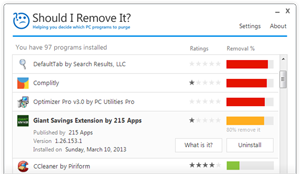Import table
advapi32.dll
RegNotifyChangeKeyValue, RegOpenKeyExA, RegSetValueExA, RegQueryValueExA, RegCloseKey, RegCreateKeyA, RegOpenKeyA
gdi32.dll
GetDeviceCaps
kernel32.dll
TlsAlloc, GetCurrentThreadId, GetUserDefaultLangID, CreateThread, GetSystemDirectoryA, CreateProcessA, GetVersionExA, GetStringTypeW, GetStringTypeA, GetOEMCP, GetACP, TlsGetValue, GetCPInfo, IsBadCodePtr, IsBadReadPtr, SetUnhandledExceptionFilter, WriteFile, GetFileType, GetStdHandle, SetHandleCount, GetEnvironmentStringsW, GetEnvironmentStrings, FreeEnvironmentStringsW, FreeEnvironmentStringsA, UnhandledExceptionFilter, LCMapStringW, LCMapStringA, CreateMutexA, TlsSetValue, WaitForSingleObject, FreeLibrary, ReleaseMutex, CloseHandle, Sleep, LoadLibraryA, GetProcAddress, GetModuleFileNameA, DeleteCriticalSection, InitializeCriticalSection, EnterCriticalSection, LeaveCriticalSection, MultiByteToWideChar, WideCharToMultiByte, HeapSize, GetCurrentProcess, TerminateProcess, GetLastError, SetLastError, HeapFree, RtlUnwind, InterlockedDecrement, InterlockedIncrement, GetModuleHandleA, GetStartupInfoA, GetCommandLineA, GetVersion, ExitProcess, HeapDestroy, HeapCreate, VirtualFree, HeapAlloc, VirtualAlloc, HeapReAlloc, IsBadWritePtr, GetSystemTimeAsFileTime, GetCurrentProcessId, GetTickCount, QueryPerformanceCounter, GetLocaleInfoA, GetProcessHeap, IsDebuggerPresent, RaiseException, TlsFree
ole32.dll
CoInitialize, CLSIDFromProgID, CoCreateInstance
user32.dll
wsprintfA, DefWindowProcA, PostQuitMessage, DispatchMessageA, TranslateMessage, GetMessageA, CreateWindowExA, GetSystemMetrics, SendMessageA, GetDesktopWindow, GetDC, ReleaseDC, GetWindowRect, SetWindowPos, GetForegroundWindow, GetWindowThreadProcessId, AttachThreadInput, SetForegroundWindow, DialogBoxParamA, IsDlgButtonChecked, EndDialog, LoadStringA, SetWindowTextA, GetDlgItem, SetDlgItemTextA, PostMessageA, FindWindowA, RegisterClassA
version.dll
GetFileVersionInfoSizeA, GetFileVersionInfoA, VerQueryValueA

